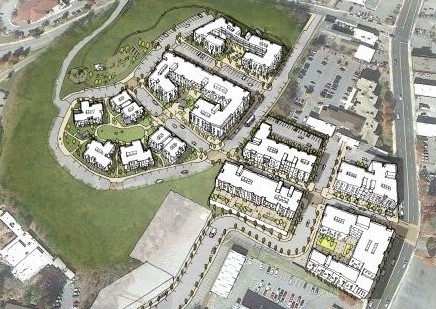Approach for Creating an Effective Master Plan
As an important part of preliminary design, master planning is vital to gain an understanding of how projects can be developed. Whether designing for a large property or a large facility, master planning greatly benefits cities, institutions, owners and developers. Once developed, the master plan becomes a valuable tool to strategize and provide guidance for implementing one large project or multiple projects over time. The following approach and process should lead to an effective plan.
Tailor The Process and Content To Your Client
Different types of clients need different planning processes that are uniquely suited to their needs. Understand client goals and values, organizational structure, who the stakeholders are, the context of the building and/or site, and how they intend to use the plan.
Stakeholder and Community Engagement
Based on the clients input developing the right methods to understand and craft the plan’s vision is crucial. A wide variety of groups could participate in the engagement process and may require different ways of participating. These may include the board, executive team, department heads, staff/faculty, potential users, the broader community, etc. In response to these, develop workshops, focus groups, interview sessions, questionnaires, and other means to define goals, vision, values, needs and internal and external relationships. Ultimately engagement fosters community building.
Research, Research, Research
The engagement process is the first step to creating a program for future needs and is the first step in the research needed for effective planning. In addition to this, developing an in depth knowledge of the site and/or building, the surrounding context, history, constraints, code implications, access to utilities and other infrastructure, and other qualities such as topography and orientation are critical. The master plan may also benefit from case studies and benchmarking of other plans or facilities that can help inform the client to possibilities and lessons learned.
Craft a Structured, Yet Flexible Comprehensive Design
Master plans by their nature should establish foundational design principles and concepts, create methods for connecting to community, and develop a means for phasing. The basic framework of design is important, but should be flexible enough to allow future designers of individual projects to bend the master plan in subtle ways that best fit their more in depth design processes. As a part of the overall design the team should develop massing and character studies, and in some instance basic design guidelines as a part of the thematic vision for the plan.
Develop Thoughtful Implementation
Phasing plans, individual project scoping narratives, and conceptual budgeting are important technical pieces of the master plan, which will assist future developers and design teams. Create a step by step process for sequencing projects, infrastructure, and transportation/circulation networks. Some plans may also benefit from establishing basic economic/financing strategies that can be used as tools for implementing projects over time.
Create Meaningful Collateral Materials
With input from the client, materials should be developed that not only record information and data collected in the planning process, but also drawings, sketches, diagrams, renderings and potentially videos that communicate the plan’s design and intent. Depending on the level of information needed these can be compiled in booklet form or as a simple set of loose documents. These materials can also be used to support fund-raising efforts if needed.

